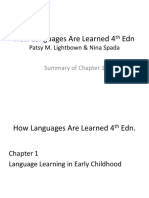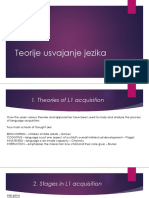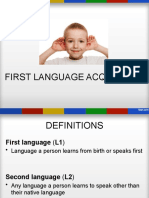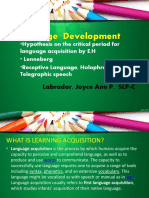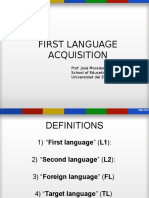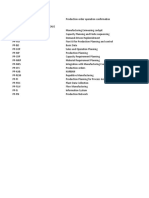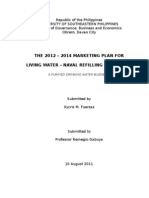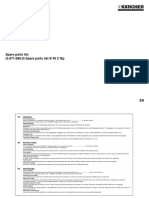0% found this document useful (0 votes)
11 views87 pagesTheory of Language Development
The document discusses the linguistic development of children and adolescents, outlining key stages such as holophrastic and telegraphic speech in early childhood, and the increased complexity and abstract thought in late childhood and adolescence. It also covers the theories of language development, including behavioral, nativistic, cognitive, and social pragmatic theories, highlighting the roles of interaction, innate abilities, and cognitive development. Overall, it emphasizes the dynamic nature of language acquisition influenced by various factors including exposure, interaction, and cognitive growth.
Uploaded by
micoleandreaaCopyright
© © All Rights Reserved
We take content rights seriously. If you suspect this is your content, claim it here.
Available Formats
Download as PDF, TXT or read online on Scribd
0% found this document useful (0 votes)
11 views87 pagesTheory of Language Development
The document discusses the linguistic development of children and adolescents, outlining key stages such as holophrastic and telegraphic speech in early childhood, and the increased complexity and abstract thought in late childhood and adolescence. It also covers the theories of language development, including behavioral, nativistic, cognitive, and social pragmatic theories, highlighting the roles of interaction, innate abilities, and cognitive development. Overall, it emphasizes the dynamic nature of language acquisition influenced by various factors including exposure, interaction, and cognitive growth.
Uploaded by
micoleandreaaCopyright
© © All Rights Reserved
We take content rights seriously. If you suspect this is your content, claim it here.
Available Formats
Download as PDF, TXT or read online on Scribd
/ 87










